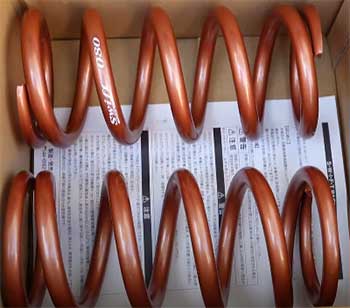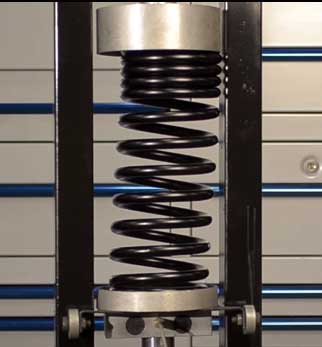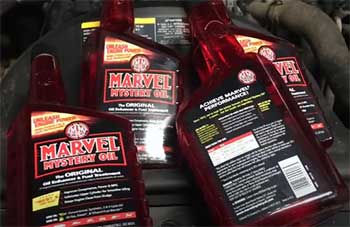There’s a little secret in the world of automotive upgrades, one that goes by the name of ‘Swift Springs’. Although they may seem like just another part of your car’s suspension, these high-performance springs offer a significant edge over regular springs.
This article will delve into the intricate world of Swift and regular springs, examining their key features, benefits, and drawbacks.
A Brief Comparison Table
| Attribute | Swift Springs | Regular Springs |
| Material | Proprietary H5S.TW Steel Alloy | Conventional Steel |
| Manufacturing Process | Advanced Techniques | Traditional Processes |
| Performance | Superior Handling, Reduced Body Roll | Adequate for Normal Conditions |
| Longevity | High, Resistant to Sagging | Moderate, Can Sag Over Time |
| Consistency | High, Maintains Tension | Can Lose Tension Over Time |
| Price | High | Low |
| Availability | Limited to Specific Models | Widely Available |
What Sets Swift Springs Apart?

To understand what makes Swift Springs stand out, we first need to comprehend the purpose of springs in a vehicle.
Springs are integral components of your car’s suspension system.
They absorb shock, ensure the car maintains contact with the road, and provide a comfortable ride by reducing the impact of bumps and dips.
Swift Springs, named after their manufacturer, Swift Springs Co., Ltd., are high-performance coil springs made from a proprietary material known as H5S.TW.
This material, coupled with the advanced manufacturing processes employed by Swift, result in springs that are lighter and more durable than their regular counterparts.
Swift Springs are designed to resist sagging, offer consistent spring rates, and provide improved handling – benefits that are hard to replicate with regular springs.
Also Read: Differences Between Feal And Fortune Auto Springs.
The Pros of Swift Springs
There are several advantages to using Swift Springs in your vehicle:
- Superior Handling
Swift Springs enhance the vehicle’s handling by reducing body roll during turns and providing more precise steering response. This level of control is critical for racing enthusiasts and performance drivers.
- Consistent Performance
Unlike regular springs, which may lose tension and sag over time, Swift Springs offer consistent performance, thanks to their exclusive material and manufacturing process.
- Improved Comfort
While performance is a major factor, Swift Springs also provide a more comfortable ride by reducing the harshness experienced on rough roads.
The Cons of Swift Springs
Despite their benefits, Swift Springs do come with a few downsides:
- Higher Cost
One of the primary cons of Swift Springs is their cost. These high-performance springs are priced considerably higher than regular springs, which may deter budget-conscious consumers.
- Limited Availability
Swift Springs are often available only for specific vehicle models, limiting their use to a relatively smaller market.
Regular Springs: An Overview

Regular springs, on the other hand, come as the standard option on most vehicles.
These springs are made of common steel and are less expensive than Swift Springs.
While they may not provide the same level of performance as Swift Springs, they still serve their purpose efficiently, offering a balance between comfort and handling for the average driver.
- Affordability
Regular springs are a cost-effective solution for the average driver, offering reasonable performance at a significantly lower cost than Swift Springs.
- Availability
Given that they are the default choice on most vehicles, regular springs are easily available for a wide range of makes and models.
However, regular springs lack the high-performance characteristics and longevity of Swift Springs. Over time, they may sag or lose tension, resulting in less effective shock absorption and potentially leading to a harsher ride.
Detailed Comparison of Swift Springs And Regular Springs
While we’ve previously skimmed the surface of the key differences between Swift Springs and regular springs, it’s time to delve deeper and explore these variations in more detail.
- Material and Manufacturing Process
Swift Springs are made from a proprietary material named H5S.TW. This high-tensile strength steel alloy has been carefully developed by Swift Springs Co., Ltd. to deliver unrivaled performance and longevity.
The use of this material, coupled with Swift’s advanced manufacturing techniques, allows these springs to be lightweight yet durable, offering consistent spring rates and better handling.
In contrast, regular springs are typically made from conventional steel. While they do an adequate job absorbing shocks and ensuring a smooth ride, they don’t offer the same performance characteristics as Swift Springs.
The manufacturing process for regular springs is less advanced, often resulting in springs that are heavier and less resilient over time.
- Performance
The performance difference between Swift Springs and regular springs is palpable, especially in high-demand scenarios. Swift Springs reduce body roll during turns, allowing for more precise steering.
This makes them a top choice for racing enthusiasts who demand superior control and handling.
Regular springs, on the other hand, perform well under normal driving conditions but may not hold up as well in demanding situations like high-speed cornering or over rough terrain.
They do an acceptable job absorbing shocks and providing a smooth ride, but the performance edge definitely goes to Swift Springs.
- Longevity and Consistency
Swift Springs are known for their resilience. They resist sagging and maintain consistent tension even after prolonged use, which contributes to their superior handling and performance.
This means that Swift Springs are likely to outlast regular springs and deliver consistent performance throughout their lifetime.
Regular springs, while durable, can sag or lose tension over time. This is due to the lesser strength of the steel used and the traditional manufacturing process.
Sagging springs can lead to less effective shock absorption, resulting in a rougher ride and potentially more wear and tear on other components of the car’s suspension system.
- Price and Availability
The major drawback of Swift Springs lies in their price and availability. Given their superior material, advanced manufacturing process, and performance benefits, Swift Springs come with a higher price tag.
Additionally, they may not be available for all car models.
On the other hand, regular springs are widely available and come standard on most vehicles. They are significantly cheaper than Swift Springs, making them a cost-effective solution for casual drivers or those on a budget.
Also Read: Should You Get Rough Country Or Bilstein Shocks?
Frequently Asked Questions (FAQ)
Swift Springs are made from a proprietary material, leading to better performance, longevity, and consistency compared to regular springs. Regular springs, made of common steel, serve their purpose but can’t match the high-performance characteristics of Swift Springs.
Swift Springs offer improved handling, consistent performance, and enhanced ride comfort, making them a popular choice among racing enthusiasts and performance drivers.
If you’re seeking improved performance and better handling, Swift Springs can be a worthy investment. However, if you’re a casual driver with no specific performance requirements, regular springs should suffice.
A Swift spring upgrade for coilovers involves replacing the standard springs in a coilover suspension system with Swift Springs. This upgrade enhances the performance of the suspension system, providing superior handling, consistency, and comfort.
Wrapping Up
In conclusion, the choice between Swift Springs and regular springs hinges on your needs, budget, and vehicle type. If you’re a performance driver seeking improved handling and consistent performance, Swift Springs are the way to go.
However, for the average driver, regular springs should serve adequately, providing a decent balance between cost and performance.

